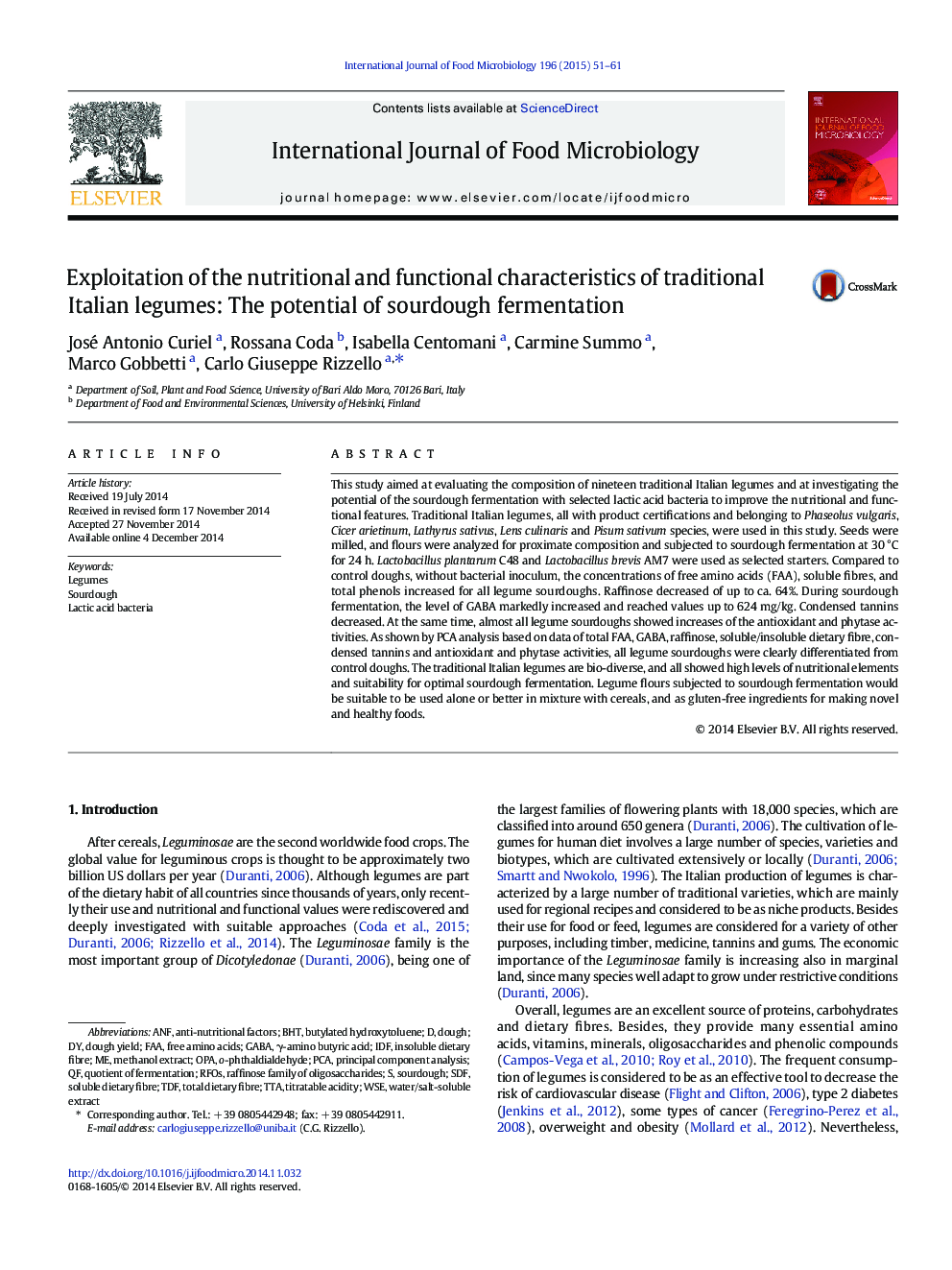| Article ID | Journal | Published Year | Pages | File Type |
|---|---|---|---|---|
| 4366776 | International Journal of Food Microbiology | 2015 | 11 Pages |
•Italian legumes were analyzed for chemical composition and subjected to sourdough fermentation.•Concentrations of functional compounds increased for all sourdoughs, whereas raffinose and condensed tannins decreased.•All legume sourdoughs showed increases of antioxidant and phytase activities.•Fermentation improve nutritional characteristics of all legumes that can be used as ingredient for making novel foods.
This study aimed at evaluating the composition of nineteen traditional Italian legumes and at investigating the potential of the sourdough fermentation with selected lactic acid bacteria to improve the nutritional and functional features. Traditional Italian legumes, all with product certifications and belonging to Phaseolus vulgaris, Cicer arietinum, Lathyrus sativus, Lens culinaris and Pisum sativum species, were used in this study. Seeds were milled, and flours were analyzed for proximate composition and subjected to sourdough fermentation at 30 °C for 24 h. Lactobacillus plantarum C48 and Lactobacillus brevis AM7 were used as selected starters. Compared to control doughs, without bacterial inoculum, the concentrations of free amino acids (FAA), soluble fibres, and total phenols increased for all legume sourdoughs. Raffinose decreased of up to ca. 64%. During sourdough fermentation, the level of GABA markedly increased and reached values up to 624 mg/kg. Condensed tannins decreased. At the same time, almost all legume sourdoughs showed increases of the antioxidant and phytase activities. As shown by PCA analysis based on data of total FAA, GABA, raffinose, soluble/insoluble dietary fibre, condensed tannins and antioxidant and phytase activities, all legume sourdoughs were clearly differentiated from control doughs. The traditional Italian legumes are bio-diverse, and all showed high levels of nutritional elements and suitability for optimal sourdough fermentation. Legume flours subjected to sourdough fermentation would be suitable to be used alone or better in mixture with cereals, and as gluten-free ingredients for making novel and healthy foods.
